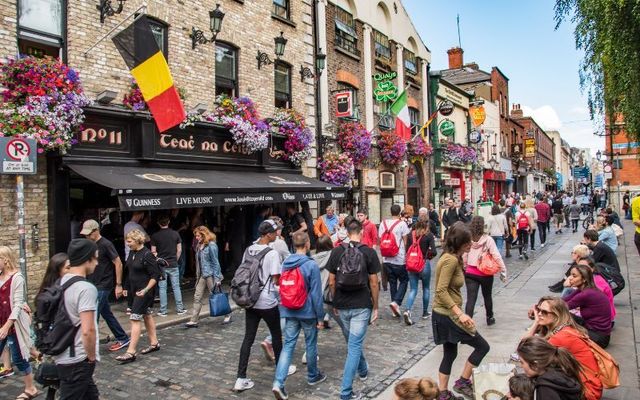Thieves have been operating in some of the capital’s most densely packed attractions, including near the Guinness Storehouse, Parliament Street, Dame Street, and Temple Bar.
They usually operate in pairs, are predominantly female, and have come here from mainland Europe on EU passports, sources familiar with the operation told the Irish Daily Mail.
Their method of operation is to blend in with tourists enjoying the city, similar to how pickpockets operate in the Italian capital.
They have also been known to attempt to join walking tours to rob unsuspecting people who are listening on the guide.
Gardaí believe these thieves have been operational in several jurisdictions across the EU.
Details of arrests in these incidents will be cross-referenced with colleagues across Europe.
Our source, speaking on the condition of anonymity, said: "Dublin used to have a problem with pickpocketing years ago, before Covid. It of course still happened after that but the levels are right back up there again.
"Gardaí know that these women are also using public transport to either move around quickly after a theft or even to carry out pickpocketing while on board."
They continued: "There are two main ways they are carrying out the robberies. The first one is they try to blend in with other tourists, holding up maps or whatever. They then dip into a tourists bag or jacket, and the goods are handed off to the partner who then walks away while the thief stays put.
"The other way is by getting on public transport wearing several layers of clothes, where they can steal and then conceal it easily.
"It’s got to a point where Dublin Bus drivers are announcing to passengers that there are suspected pickpockets on board, as a lot of [the drivers] actually recognise these people."
Despite this, Public Expenditure Minister Paschal Donohoe said recently that Dublin city centre is not dying and is a safe place.
It comes amid concerns about crime, drug use and the viability of the hospitality sector in the heart of the capital. Mr Donohoe said the Government wanted to make the capital a "great city to live, visit and go out in".
"We’re not where we want to be with regard to that, but I think we will get there," he added.
Mr Donohoe rejected the suggestion that recent high-profile restaurant closures were an example of the death of the city centre. Speaking to reporters at The Complex, an arts centre in Smithfield, Dublin, the minister said: "We are standing in an amazing complex that’s only opened in recent years, that is an example of the change that’s under way in the city centre.
"When I’m out in Dublin at night, when I’m spending time here in the city centre – a city centre that I live reasonably near, that I spend a lot of time in – I see the challenges that are there, but I see a vibrancy, and I see movement and vitality in our city.
"That certainly does not speak to 'death'." He added: "I know there are businesses who are finding it a struggle, but we are trying to help them. We’re trying to make this a safer, a more secure and a more beautiful city to be in. I know there’s lots more that we need to do too."
* This article was originally published on Extra.ie.




Comments